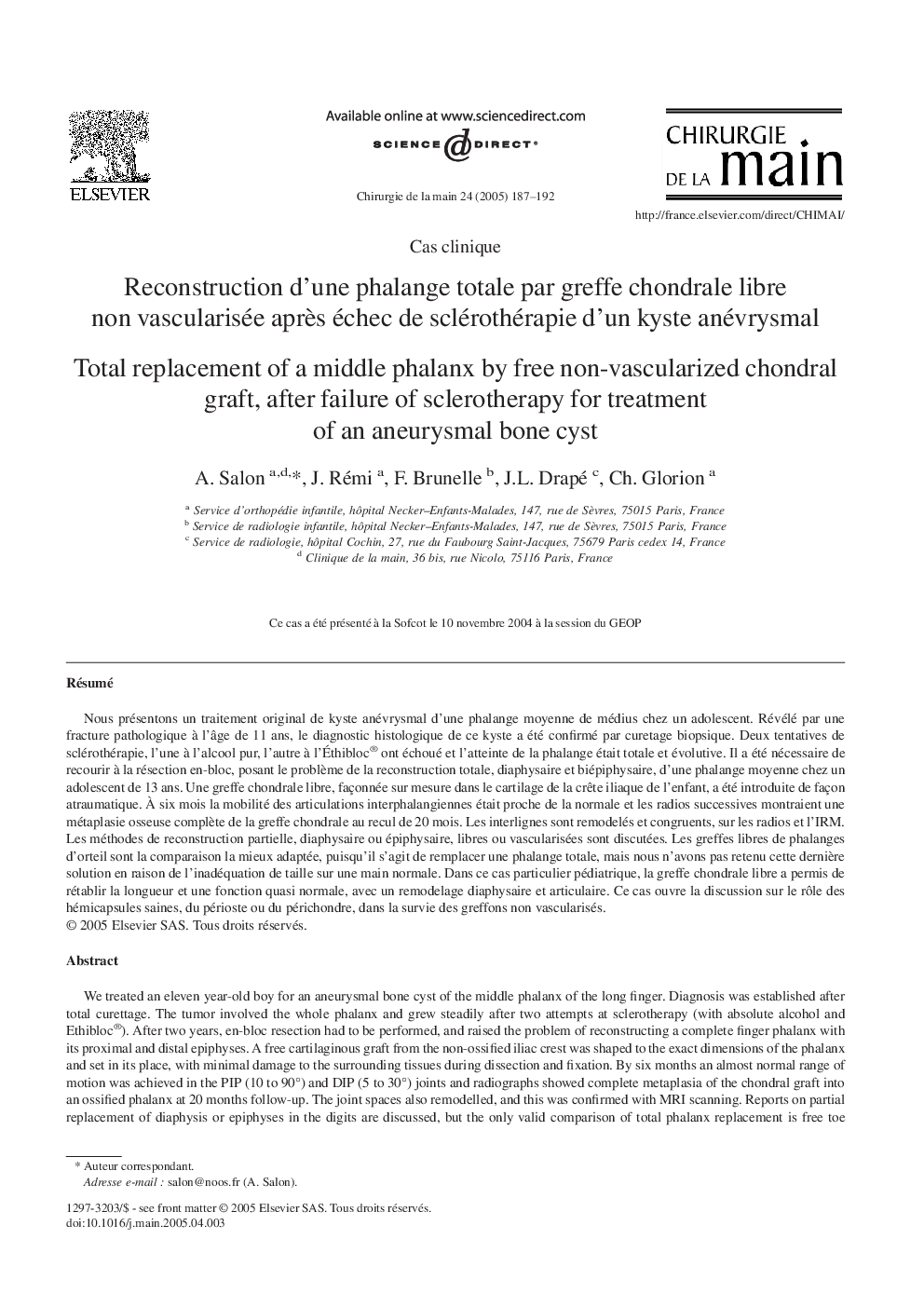| Article ID | Journal | Published Year | Pages | File Type |
|---|---|---|---|---|
| 9350225 | Chirurgie de la Main | 2005 | 6 Pages |
Abstract
We treated an eleven year-old boy for an aneurysmal bone cyst of the middle phalanx of the long finger. Diagnosis was established after total curettage. The tumor involved the whole phalanx and grew steadily after two attempts at sclerotherapy (with absolute alcohol and Ethibloc®). After two years, en-bloc resection had to be performed, and raised the problem of reconstructing a complete finger phalanx with its proximal and distal epiphyses. A free cartilaginous graft from the non-ossified iliac crest was shaped to the exact dimensions of the phalanx and set in its place, with minimal damage to the surrounding tissues during dissection and fixation. By six months an almost normal range of motion was achieved in the PIP (10 to 90°) and DIP (5 to 30°) joints and radiographs showed complete metaplasia of the chondral graft into an ossified phalanx at 20 months follow-up. The joint spaces also remodelled, and this was confirmed with MRI scanning. Reports on partial replacement of diaphysis or epiphyses in the digits are discussed, but the only valid comparison of total phalanx replacement is free toe phalanx grafting. We did not choose this solution in a normal hand because of the length discrepancy between finger and toe phalanges. This case shows that, in this particular paediatric situation, the free non-vascularised transfer of a chondral graft restored excellent function, with remodelling of the phalanx and joint spaces of the finger.
Related Topics
Health Sciences
Medicine and Dentistry
Orthopedics, Sports Medicine and Rehabilitation
Authors
A. Salon, J. Rémi, F. Brunelle, J.L. Drapé, Ch. Glorion,
